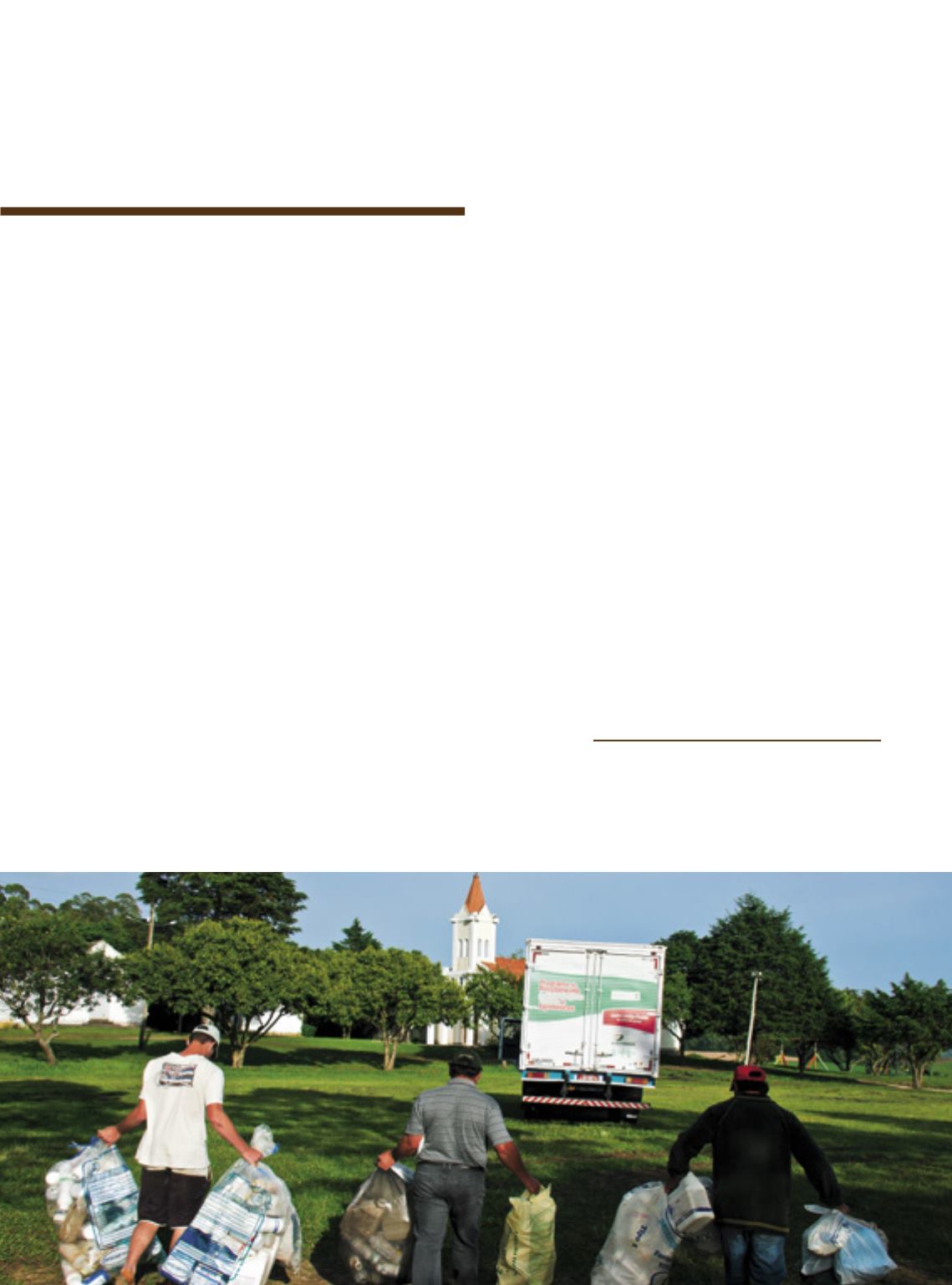
Inor Ag. Assmann
The correct disposal of the empty pesticide containers started with the tobacco
sector in Brazil. Since 2000, the Empty Pesticide Packaging Collection Program has
been collecting the empty pesticide containers discarded by the tobacco farmers in
SouthBrazil. The Interstate Tobacco IndustryUnion (SindiTabaco) started the collec-
tionprogramtwoyearsbefore itwasmademandatoryby law. TheTobaccoGrowers’
Association of Brazil (Afubra) also lends support to the initiative.
The percentage of tobacco producers that returned their empty containers
reached 98% in 2016, according to a survey conducted by the Research and Study
Center inAdministration, of the Federal University of RioGrandedoSul (Ufrgs). From
October 2000 to October 2017, the collection of empty containers from the tobacco
growingholdings amounted to14.8millionpieces. “Thepreservationof theenviron-
ment and care for farmers’ health and safety are themainobjectives related topack-
aging collection”, says Carlos Sehn, coordinator of the program. The containers of
pesticides used on crops other than tobacco are equally collected.
Thecollectionoperationcomprises550tobaccogrowingmunicipalitiesinRioGrande
doSulandSantaCatarina.Thetrucksoftheprogramvisit2.6thousandcollectionsitesin
theruralsetting,accordingtoanagendapreviouslydivulged,alongwithinvitationsdeliv-
ered to the farmers by the field staffs. In the stateof Paraná, similar initiatives are carried
outbylocalcenters,supportedbycompaniesassociatedwithSindiTabaco.
Furthermore, the program that comprises the tobacco sector started to comply
withArticle 53 of Decree 4.074, of 2002. It sets forth that “users of pesticides and sim-
ilar productsmust return theempty containerswith their respective lids to the shops
where they were acquired, in compliance with the instructions on the labels, in a
year’s time, fromthe purchase date”.
Model for the
Country
The collectionof the empty pesticide packaginghas
reached 14.8millionpieces up to 2017, year inwhich the
initiative completes 17 years inoperation
PANORAMA
In 2002, when the return of the empty packag-
ing became mandatory, Brazil had registered the
collection of 3.768 thousand tons, and evolved to
44.528thousandtonsin2016.Theforecastfor2017
is for the collection of 44.5 thousand tons, accord-
ing to data released by the National Institute for
ProcessingEmptyContainers (inpEV).
According to inpEV sources, 94% of the prima-
ry chemical pesticide containers sold by the man-
ufacturing industry are collected and disposed of
in a correct manner. For the purpose of compari-
son, collection in Germany reaches 76%: in Cana-
da, 73%: inFrance, 66%; inJapan, 50%and30%in
the United States, according to data from the Na-
tional Bank for Social andEconomicDevelopment
(BNDES). Around 90% of the material is recycled
and the remaining10%is incinerated. Anumber of
22 states accounted for the total returned in2016.
The Empty Pesticide Packaging Collection
Program tries to serve all tobacco growers in
South Brazil. Furthermore, the companies devel-
op other socio-environmental initiatives geared
towards their integrated farmers. An example is
the project that started collecting the recyclable
residues fromthe farmswith the intention to pre-
serve the environment and the integrity of the to-
bacco produced in the region.
Researchshows
that 98%of the
farmers returned their
emptycontainers
107


